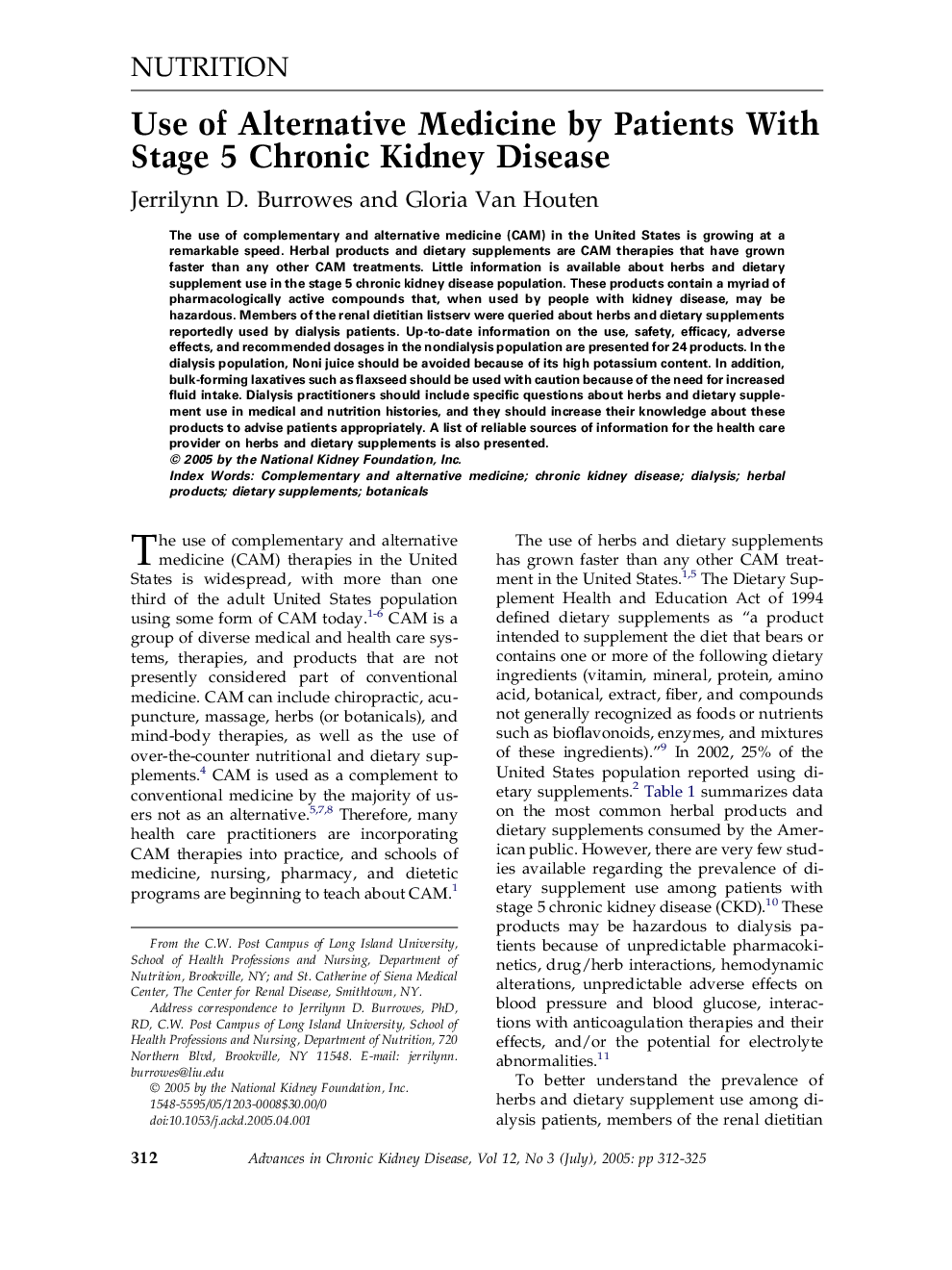| Article ID | Journal | Published Year | Pages | File Type |
|---|---|---|---|---|
| 9307759 | Advances in Chronic Kidney Disease | 2005 | 14 Pages |
Abstract
The use of complementary and alternative medicine (CAM) in the United States is growing at a remarkable speed. Herbal products and dietary supplements are CAM therapies that have grown faster than any other CAM treatments. Little information is available about herbs and dietary supplement use in the stage 5 chronic kidney disease population. These products contain a myriad of pharmacologically active compounds that, when used by people with kidney disease, may be hazardous. Members of the renal dietitian listserv were queried about herbs and dietary supplements reportedly used by dialysis patients. Up-to-date information on the use, safety, efficacy, adverse effects, and recommended dosages in the nondialysis population are presented for 24 products. In the dialysis population, Noni juice should be avoided because of its high potassium content. In addition, bulk-forming laxatives such as flaxseed should be used with caution because of the need for increased fluid intake. Dialysis practitioners should include specific questions about herbs and dietary supplement use in medical and nutrition histories, and they should increase their knowledge about these products to advise patients appropriately. A list of reliable sources of information for the health care provider on herbs and dietary supplements is also presented.
Keywords
Related Topics
Health Sciences
Medicine and Dentistry
Nephrology
Authors
Jerrilynn D. Burrowes, Gloria Van Houten,
